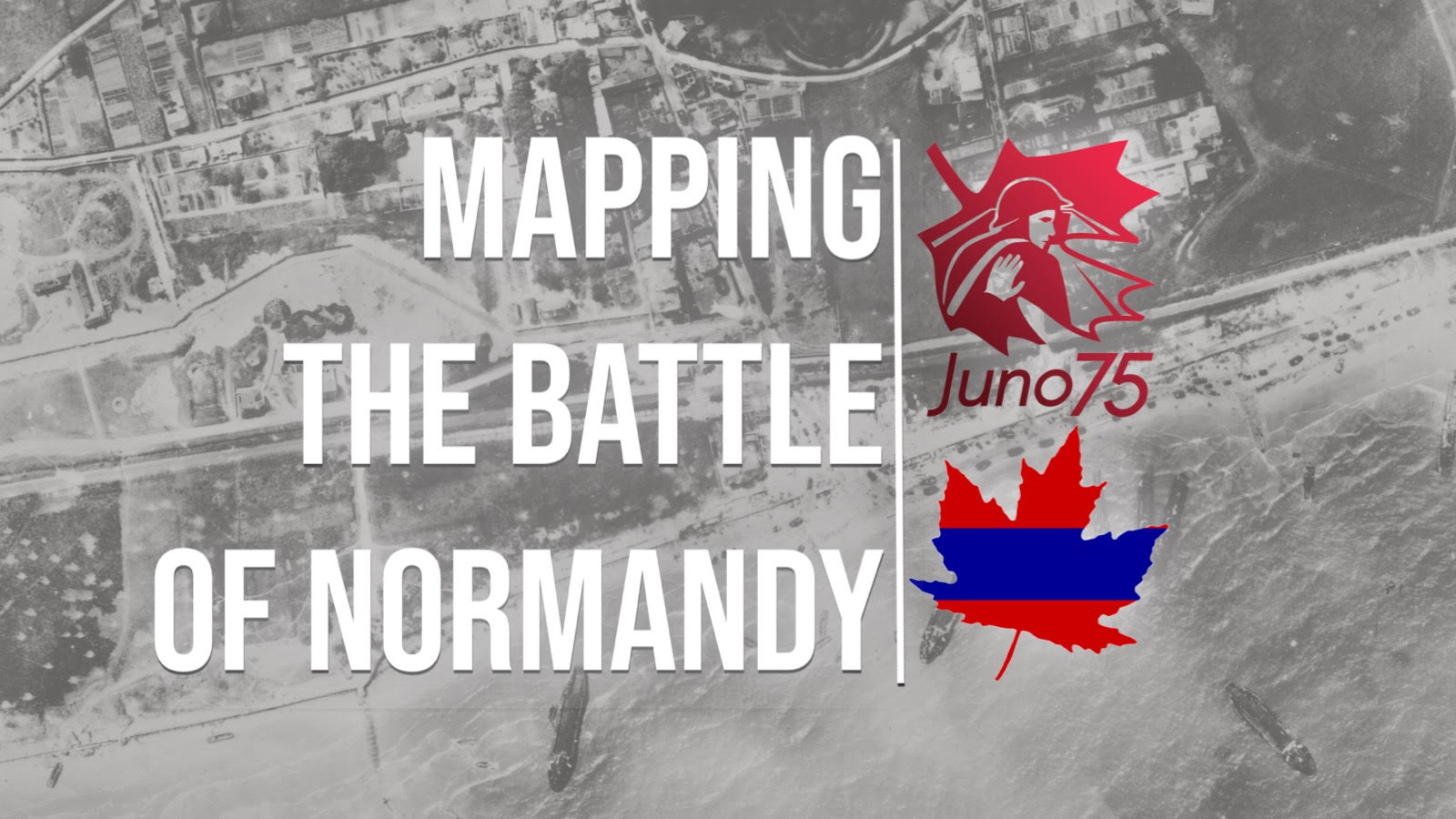Between Armies: Operation Knife and the Battle for Clair Tizon
By Alexander Fitzgerald-Black
The date was 11 August 1944. The Battle of Normandy was over two months old, and First Canadian Army had just concluded Operation Totalize, a massive armoured thrust across the Verrières Ridge and down the Caen-Falaise highway. Falaise, the next major communications centre south of Caen, remained in German hands.
To the southwest, near the small town of Mortain, the Americans blunted a major German counteroffensive of four panzer divisions. Meanwhile, Lieutenant General George S. Patton’s Third US Army took Le Mans on 8 August, the same day Operation Totalize went into full bore. Allied troops now surrounded the German forces in Normandy on three sides.[1]
When Totalize bogged down, General Bernard Montgomery ordered Second British Army (Lieutenant-General Miles Dempsey) and First Canadian Army (Lieutenant-General Harry Crerar) to renew their efforts to capture Falaise.[2] The main effort would come from the 53rd (Welsh) Infantry Division and the 59th (Staffordshire) Infantry Division, both with XII British Corps. The 2nd Canadian Infantry Division from II Canadian Corps would take up the left flank.
Soldiers from 53rd (Welsh) Division advancing through Normandy in 1944.
The Regimental Museum of the Royal Welsh
The 4th Canadian Infantry Brigade led the Canadian charge. The combined British plan, Operation Knife, envisaged the 53rd (Welsh) capturing Falaise from the west.[3] The Canadians, however, understood their flanking attack could also support the Canadian-led thrust down the Caen-Falaise highway by weakening the enemy forces blocking that crucial road.[4]
The Royal Hamilton Light Infantry struck southwest from Bretteville-sur-Laize to Barbery on the night of 11/12 August. This preceded the Welsh advance from the northwest towards Fresney-le-Vieux, slated to begin at 1100 hours on the 12th. In both instances, the defenders were grenadiers from the 271st Infantry Division backed by mobile battlegroups of the 12th SS Panzer Division (Hitler Youth) and 102 Heavy SS-Panzer Battalion. These forces took advantage of the terrain to make the most of their depleted strength. The roads in the sector “were often little more than tracks” and the area “was dominated by dozens of small hamlets and woods, offering the enemy excellent concealment” according to an historian of the Welsh division.[5]
The Rileys captured Barbery easy enough but ran into a concentrated defence on a ridgeline south of town. This position near Cingal had the backing of six Tiger tanks from 102 Heavy SS-Panzer Battalion.[6] The Canadians lost eight tanks from the supporting Sherbrooke Fusiliers squadron (listed as victims of Panthers), and the Rileys dug in.[7]
Further to the east, the 1/5th Welch Regiment prepared to assault Fresney-le-Vieux. Among their ranks was Lieutenant Maurice Trudeau, an officer on loan to the British Army as part of the Canloan program. Maurice had signed up for active service on 29 August 1942, one day after his 21st birthday and just 10 days after the disaster at Dieppe. Hailing from Westmount, Quebec, Maurice joined Le Régiment de Maisonneuve. The unit quickly advanced him to acting sergeant and recommended him as “good officer material.” After attending the Officers’ Training Centre (OTC) at Brockville, Ontario the commandant recommended Maurice for commissioning, reporting that he was a “hard worker” who “assumes responsibility and is developing leadership.”[8]
Men of the 1/5th Welch Regiment engaged on sniper-clearing duties, 10 August 1944. Left to right: Pte G Wyatt; Pte R J Wilkes; Pte J C Kershaw.
© IWM (B 8978)
Like many other OTC candidates, Lieutenant Trudeau married shortly after graduation. He wed Beverly Markum, also of Westmount, on 4 September 1943. More training followed before Trudeau volunteered for the Canloan program and embarked for the United Kingdom. He arrived there and received his posting to 1/5th Welch on 12 May 1944. The unit proceeded to France at the end of June.[9]
Lieutenant Maurice Trudeau was one of 75 Canadian officers killed in Normandy while on loan to the British Army. The epitaph on his headstone reads “Rest in the peace a loving Jesus gave you and man denied you.”
Courtesy of Jen Sguigna and the Juno Beach Centre Association
Now Lieutenant Trudeau found himself commanding 18 Platoon in “D” Company for the advance on Fresney-le-Vieux. The barrage from 25-pounder and 5.5-inch guns began at 1040 in the morning and lasted 20 minutes. At 1100 hours Maurice began leading his men forward into the assault. It took most of the afternoon to secure the town, and “D” Company suffered the worst: of the nearly 130 officers and men who made the attack only 28 reported for duty that evening.[10] Lieutenant Trudeau was among the dead, with his platoon reduced by two-thirds to 12 men. Lance Corporal Mostyn Thomas remembered the French Canadian officer as “a really good chap.”[11] Lieutenant Trudeau was one of 75 Canloan officers who died in Normandy, representing 59 percent of the program’s total fatalities.[12]
Back in the Canadian sector, The Royal Regiment of Canada captured Moulines on the afternoon of 12 August. The action cost the battalion 10 killed and 57 wounded or missing. The next day the battalion captured Point 151 near Tournebu in support of The Essex Scottish Regiment’s attack on Point 184 to the south of town.[13] Both attacks succeeded, with the Essex Scottish bypassing five Tiger tanks, possibly from 102 Heavy SS-Panzer Battalion.[14] The Scottish alone captured 150 prisoners of war while the Rileys in Tournebu seized a dozen 8.1-cm mortars with plenty of ammunition, along with dozens of small arms and machine guns, and even a French Renault tank. Their casualties for the past two days of fighting were 20 killed and 100 wounded.[15]
The Canadian attacks helped speed the Welsh advance. Back on 12 August the 1st Battalion, East Lancashire Regiment captured Bois-Halbout, or “Boiled Halibut”, as the men joked. At the cost of two Churchill tanks and 11 infantry killed and 39 wounded the East Lancs captured over 200 prisoners of war. These men were mainly from the 271st Infantry Division which, over three days, lost 800 men captured.[16]
The 5th Canadian Infantry Brigade took up the Canadian advance towards Clair Tizon. The Calgary Highlanders moved forward from Le Mesnil at 1400 hours. The war diarist later recorded:
Many queer things happened around LE MESNIL during our stay there. One was the taking over of a Jerry [Regimental Aid Post] and its [medical officer] plus casualties. Prisoners simply poured into our cage and looked like a queue going up to the ticket box at a theatre, with the [intelligence officer] acting as doorman. Each and every prisoner had an Allied leaflet entitled "Safe Conduct" assuring them of good treatment if taken prisoner… They smelled as if a bath had been lacking for weeks and they appeared half-starved as well.
In another instance, a young German jumped from the bushes and into the back of a captain’s jeep. The terrified soldier refused to get out, desperate to be safe from Allied shellfire and bombing.[17] The Calgaries secured Clair Tizon by 1800 hours, and the rest of the division moved up to assist in securing the boundary between the British and Canadian armies.
The presence of Canadian troops at Clair Tizon prompted a renewed German response. First, the 271st Infantry Division, pressured by both the Canadians and the Welsh division, withdrew to a new defence line further south. Second, the 12th SS Panzer Division, with its battlegroups already spread thin, sent a reinforced battalion to provide the 271st with more backbone to resist the Allied advance.[18] The Germans paid a high price to hold Falaise just as they were about to be hit by another armoured assault: Operation Tractable.
Sandwiched between two major armoured offensives – Totalize and Tractable – Operation Knife and the Battle for Clair Tizon don’t receive much recognition. Another unit that Canadians may be unfamiliar with is the 59th (Newfoundland) Heavy Regiment, Royal Artillery. These Newfoundlanders supported XII British Corps during the Battle of Normandy. Their 7.2-inch howitzers brought heavy fire down on the Germans in the path of the 53rd (Welsh). On 15 August the Newfoundland gunners moved up to Fresney-le-Vieux, where Lieutenant Trudeau lost his life three days before.[19]
A 7.2-inch howitzer of one of the 59th (Newfoundland) Heavy Regiment’s sister units, 51st Heavy Regiment, Royal Artillery, France, 2 September 1944.
© IWM (B 9956)
#project44 #juno75 #Liberation75
VISIT OUR BETA WEBMAP BY CLICKING BELOW
[1] Robert M. Citino, The Wehrmacht’s Last Stand: The German Campaigns of 1944-1945 (University Press of Kansas, 2017), pp.263-266.
[2] Terry Copp, Fields of Fire: The Canadians in Normandy (Toronto: University of Toronto Press, 2007), p.218.
[3] Jonathan Ware, Jocks, Dragons and Sospans: Through Normandy with 53rd Welsh Division, unpublished manuscript, 2019, p.758.
[4] Library and Archives Canada (LAC), RG 24-C-3 Volume 14093, The 4th Canadian Infantry Brigade War Diary, 11 August 1944.
[5] Ware, p.751.
[6] Ibid., p.763.
[7] LAC, RG 24-C-3 Volume 14093, The 4th Canadian Infantry Brigade War Diary, 12 August 1944.
[8] LAC, RG 24 Volume 30911, Maurice Arthur Trudeau’s service file.
[9] Ibid.
[10] Ware, p.770.
[11] Royal Welsh Museum Archives, Normandy Revisited, Mostyn Thomas.
[12] Geoff Hayes, Crerar’s Lieutenants: Inventing the Canadian Junior Army Officer, 1939-1945 (Vancouver: UBC Press, 2017), 158.
[13] LAC, RG 24-C-3 Volume 15226, The Royal Regiment of Canada War Diary, 12-13 August 1944.
[14] LAC, RG 24-C-3 Volume 15061, The Essex Scottish Regiment War Diary, 13 August 1944.
[15] LAC, RG 24-C-3 Volume 15216, The Royal Hamilton Light Infantry War Diary, 13 August 1944.
[16] Ware, p.808.
[17] LAC, RG 24-C-3 Volume 15020, The Calgary Highlanders War Diary, 13 August 1944.
[18] Copp, p.223.
[19] LAC, RG 24 Volume 14543, The 59th (Newfoundland) Heavy Regiment, RA War Diary, 15 August 1944.

